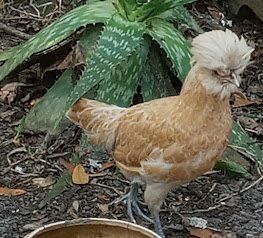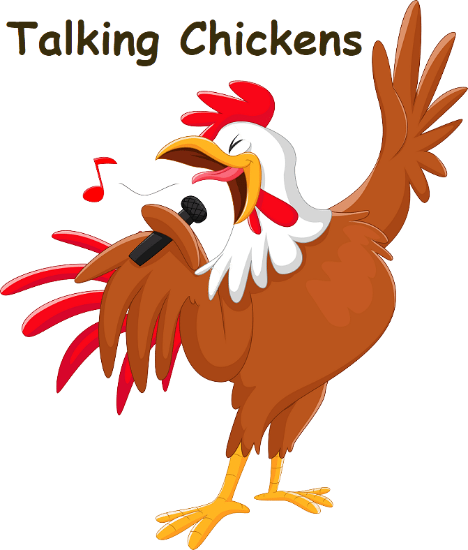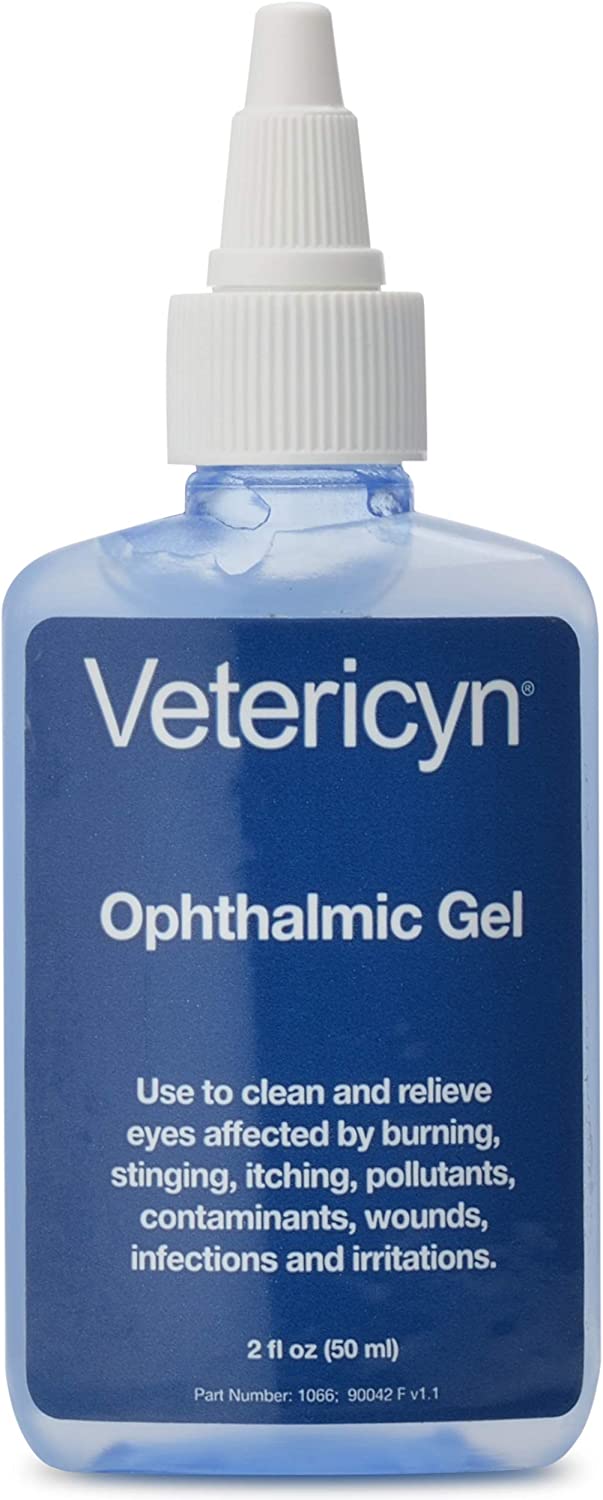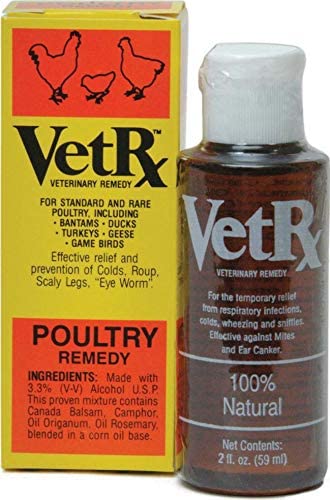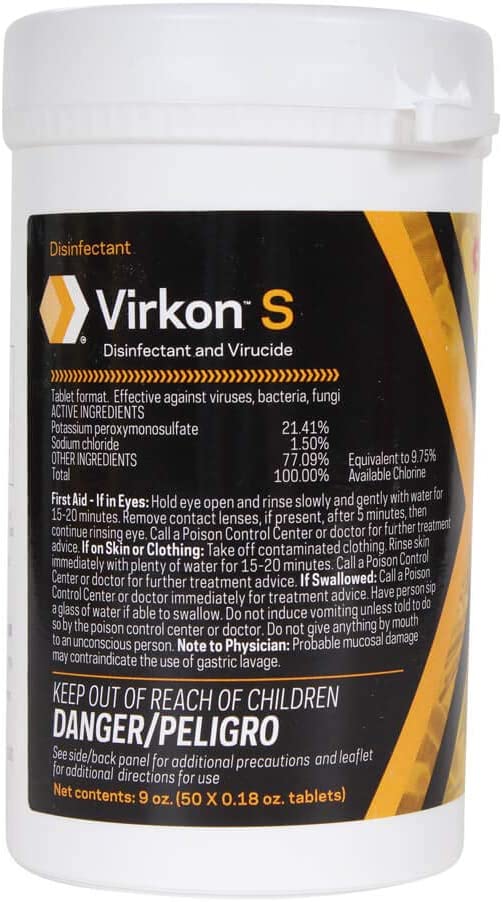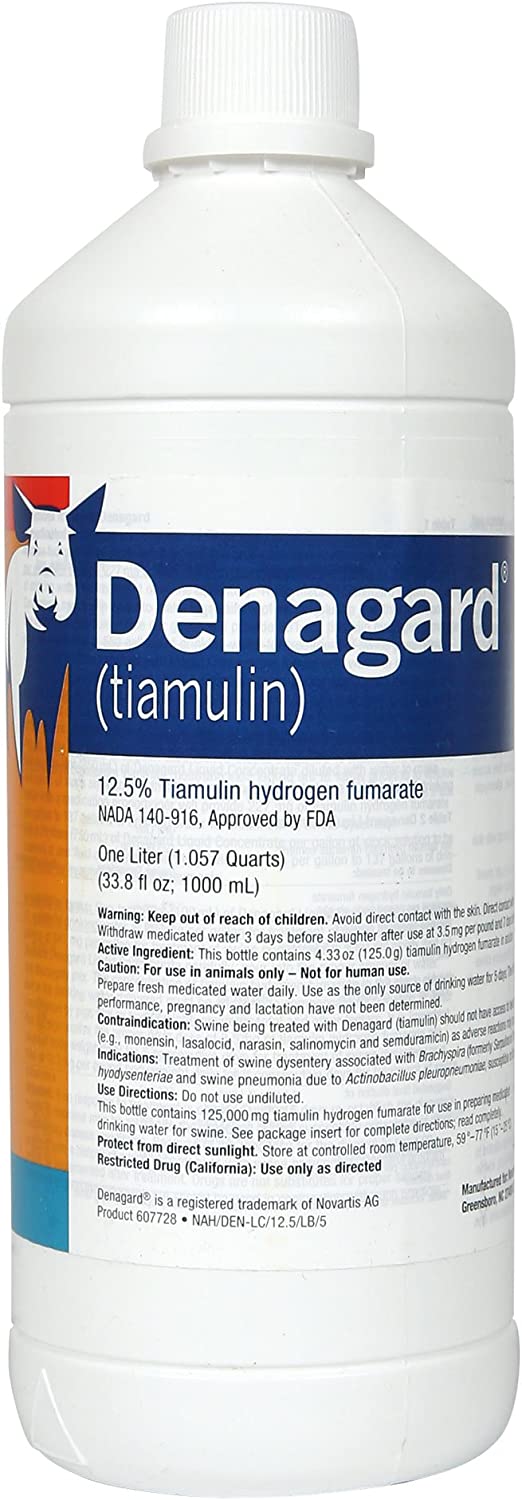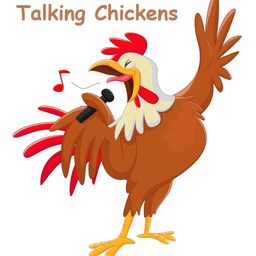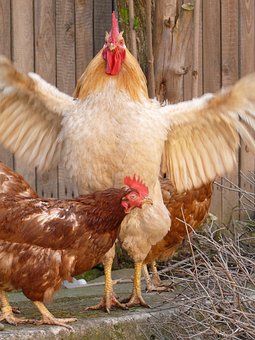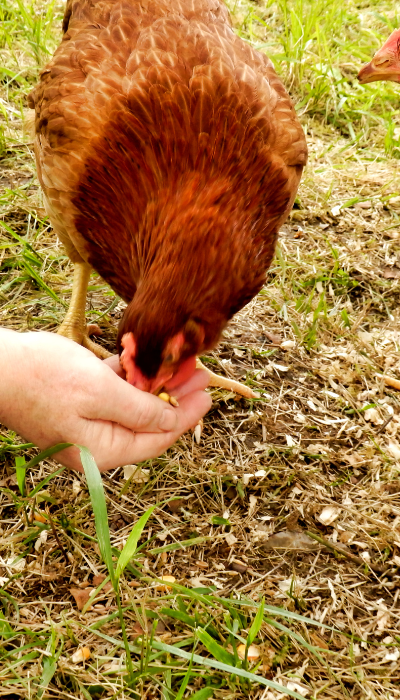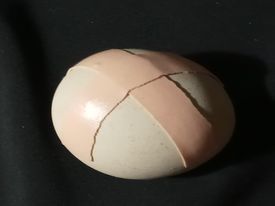We love our chickens and when one is suffering it becomes unbearable for us chicken keepers to watch them, so we quickly run for the chicken first aid kit and hopefully we have just the right solution in it.
Well for chickens' eye issues you will find questions and answers below, including photos by Ashley Happ Garrison who so graciously provided us with her poor baby's eye pictures to help others prevent such suffering.
Liane S. Page: My poor Bruni had a bad eye one day, it wasn't as bad as the one below thank goodness, but I used a moist and a soapy sponge and gently washed it all off and a few days later the eye was totally opened. I was lucky.
The following story by Ashley Happ Garrison:
Help! I went away for a week (husband was here), she went broody and I just found her eye like this. What can I do? EDIT: please look in comments for recent updated picture. Does it appear to be fowl pox??
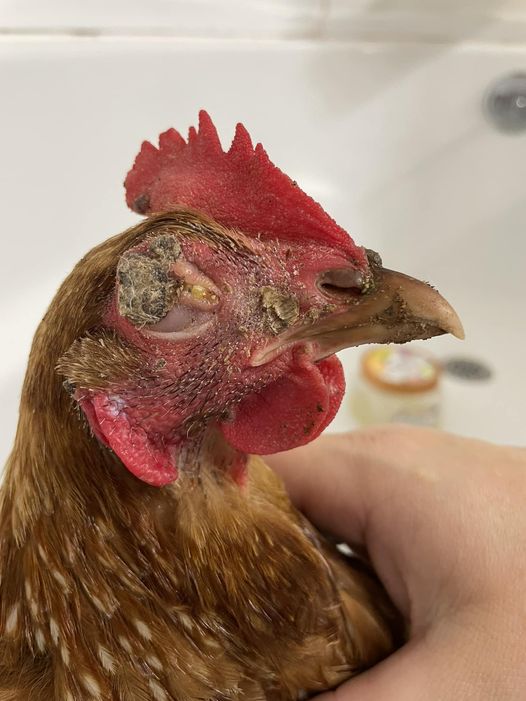
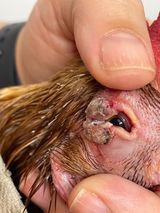
Ashley Happ Garrison: AuthorEdit: this is what it looks like now that it’s softened. Still working on removing it but doesn’t look like it wants to come off. Her eyelid is separated and it looks like it’s attached to each eyelid individually? She can move her eye and it doesn’t look effected.
Update: She made a full recovery after a few days of terramycin and warm soaks (lots of snacks didn’t hurt either). She was separated from the flock for a few days after she eye got better to make sure she was completely healed.


I suspect she scraped the scab off herself while rubbing the ointment of her eye. I caught her rubbing her face on her wing after the ointment was applied a couple of times.
Angie Chrisman: If it's pus in the eye chicken pus is hard and yellow like a kernel you'll have to push up fairly hard and get that kernel out of the eye. It looks like it's displaced the eye. Soak the gunk off first so you can see clearly. If it is pus and you get it out use Vetericyn it's great for eye infections!!
Liane S. Page: After research I found that Vetericyn is used by most people, some suggest the VetRX, some say absolutely not. I read on the instructions at home on my bottle and it states that it can be used for eyes, but I suggest Vetericyn since it it Antimicrobial. I used VetRX on my wheezing chicken for the last 3 days and she seems to get better.
FAQ
What Does an Injured Chicken Eye Look Like?
Answer by: Backyard Poultry - Chicken eye problems can be caused by bacteria, dirt abrasions or wounds. Left untreated the eye will continue to get worse. What do you do to clean the eye without making the problem worse? Often the eye will look cloudy. The cloudiness can be quite distinct looking. You may think the eye is not able to be saved. At the very least, try a course of using the Vetericyn Eye Gel. It will cost a lot less than the cost of a veterinarian visit. I know a lot of homesteaders need to watch carefully how the money is spent. All I can tell you is, I have used this product for a few years and every single duck and chicken has sight in both eyes. The chicken may not want to open the eye due to photosensitivity. This should pass as the eye heals. Bandaging the eye won’t work but using the eye gel has worked for us every time. I also use a standard bottle of saline solution for cleaning. A small speck of dirt may have lodged in the eyelids and caused a scratch.
How do you treat an eye infection in chickens?
Answer by: Wikipedia - Treatment consists of using antibiotics such as erythromycin, dihydrostreptomycin, streptomycin, sulfonamides, tylosin, and fluoroquinolones.
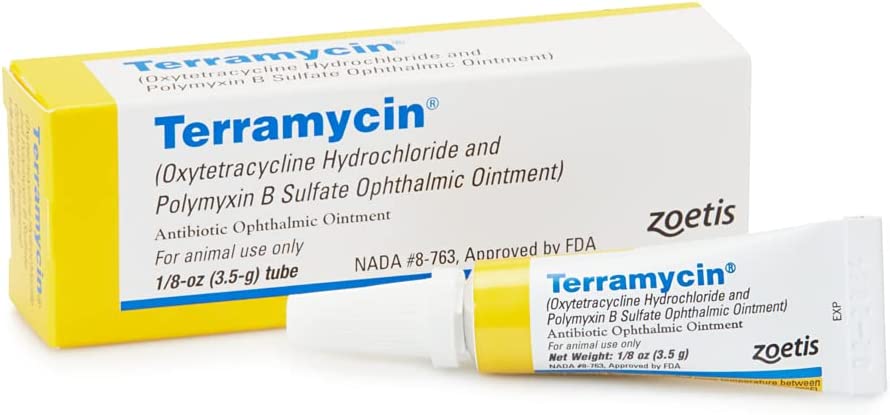
Antibiotic Ointment for Eye Infection Treatment in Dogs, Cats, Cattle, Horses, and Sheep, 0.125oz Tube
Terramycin - $23.63
What causes eye problems in chickens?
Answer by: Birdhealth - The most common causes of these symptoms in backyard and show poultry are the following diseases: Infectious Coryza, CRD (Mycoplasma infections), ILT, IB Marek's Disease (MD) and Fowl Pox.
Can you use eye drops on chickens?
Answer by: Curicyn - Curicyn's eye drops for dogs help care for the symptoms that can come with an irritated eye, such as reducing inflammation and calming irritated eyes. This eye care solution is also great for addressing eye irritation in horses, cattle, sheep, goats, swine, chickens, birds, cats, reptiles, and more.
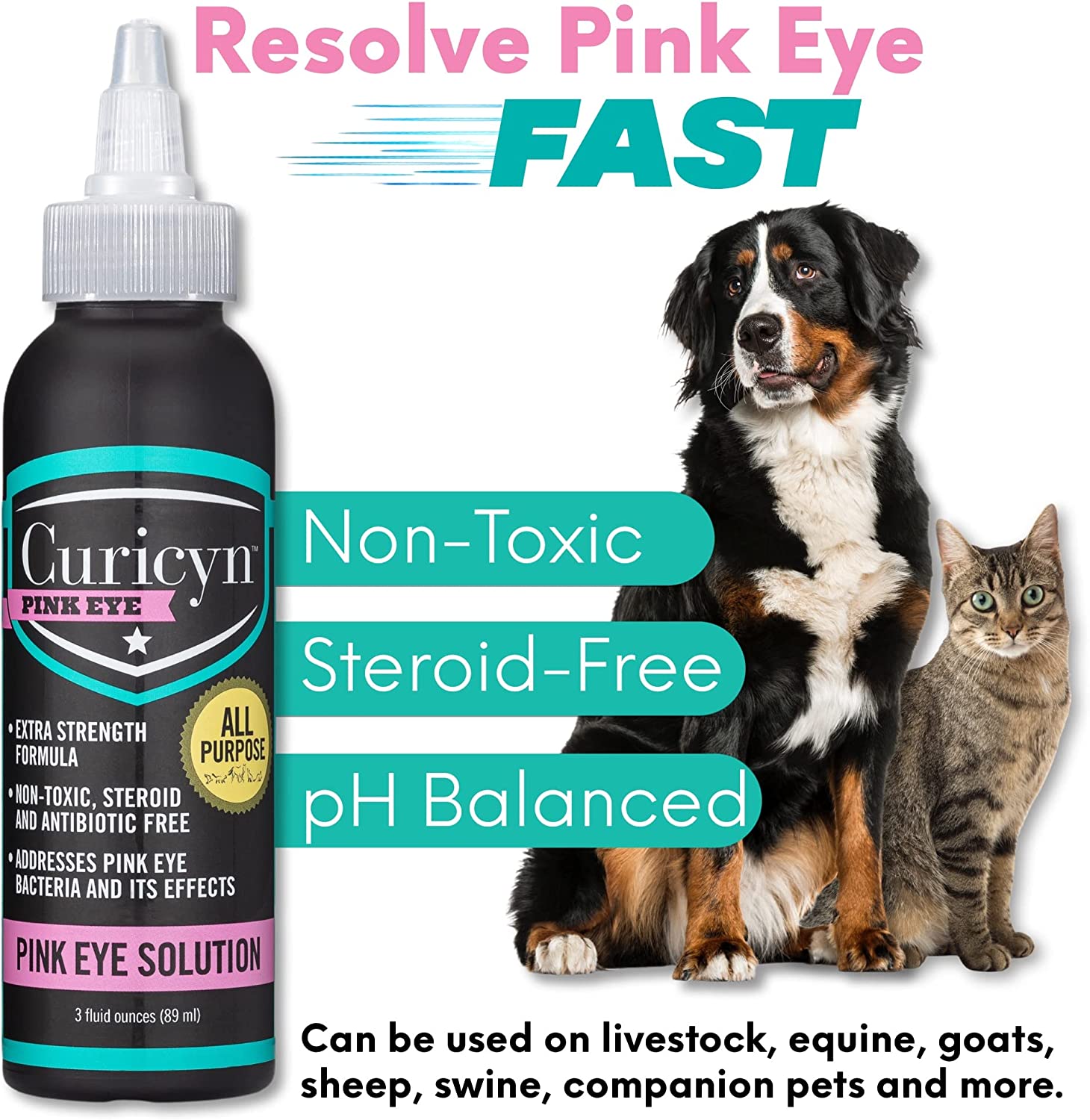
Pink Eye Solution, Conjunctivitis Eye Drops for Chickens, Dogs, Cats, Livestock and Horses – Pain Free, Non-Steroidal Dog Eye Wash with Purified Anolyte - Effects Observed in 1-3 Days - 3 oz
Curicyn / Eastern Technologies - $12.97
How do you make saline solution for chicken eyes?
Answer by: Medical News Today - Homemade saline solution requires the following: 4 cups of distilled or boiled (for at least 20 minutes) water. 2 teaspoons (tsp) of non-iodized salt, an airtight storage container with a lid, such as a bottle.
Can you put Neosporin on chicken eye?
Answer by: Eco Farming Daily - For scratches, cuts, tears and fighting injuries it is hard to beat a simple cleaning of the area and regular applications of Neosporin, Triple Antibiotic or other common wound ointment. Deep wounds can be a special problem, so clean them with hydrogen peroxide and then use a good ointment.
What are the treatments for eye worms in chickens?
Answer by: Sarah L. Harrer - Chickens are exposed to eye worms by eating cockroaches infected with the worms. The cockroaches eat chicken droppings full of worm eggs that hatch inside their bodies and become larvae. The chickens then eat the infected cockroaches. The worms migrate up through the chicken's esophagus and up through the ducts to the eye. These worms swim underneath the chicken's eyeball. Treat eye worms in chickens using prevention methods and medical intervention.
Symptoms
Symptoms of eye worm in chickens include swollen, watery eyes and eyelids that stick together. Pus forms in the corner of the eye where the worm is living. Check the corner of the chicken's eye for visible worms. The chicken's vision becomes impaired without proper treatment. The bird begins to scratch at the infected eye with the tip of its wing. Chickens with severe cases of eye worms might scratch at the affected eye so much that they scratch the eye out.
Over-the-Counter Medicine
Eye worms in chickens are mostly treated by a medicine called VetRx. VetRx is available at feed stores. Add 1 tsp. of VetRx to one cup of very warm water. Administer the treatment to the chicken by holding the bird under one arm. Open the chicken's mouth, and turn the bird down so the cleft in the roof of the mouth is in plain view. Dab the end of a cotton swab into a warm VetRx solution, and apply it directly to the cleft. VetRx will come from both sides of the beak, and pus will drain from the eyes. Clean the pus from the chicken's eyes and allow the bird to rest. Repeat until the chicken is free of eye worms.
Surgical Removal
Veterinarians remove eye worms by first administering a local anesthetic. The doctor holds the chicken's head rigid and inserts the tips of dull-pointed forceps beneath the nictitating membrane of the eye, which is the thin inner eyelid of the chicken. The veterinarian continues this procedure until all visible eye worms are removed, then he adds one or two drops of Cresol solution. The eye is flushed with warm water to remove remaining debris.
Prevention
Prevent eye worms in chickens by sanitizing their living area, cleaning and disinfecting the area on a regular basis. Place the chickens on wire placed above ground level to keep the birds from being exposed to cockroaches and contaminated droppings. Control the cockroach population using pesticides approved for use in areas where chickens live. Separate chickens by age group, because older chickens may carry parasites and display no symptoms. Keep them separate from other poultry. Watch closely for signs of eye worms, and seek treatment immediately to prevent blindness in the chickens.
Does my chicken have Cataract?
Answer by: Domestic Animal Breeds - Cataracts look like a cloudy film covering the chicken’s eye or eyes. Normally a chicken has very bright eyes. While when cataracts are present the eye lens will be partially or completely covered over by a film.
There are a few causes of cataracts in a chicken some of them being:
Diseases such as Marek’s disease and avian encephalomyelitis
or a bad diet where they may be lacking in certain nutrients such as omega 3 fatty acids and sufficient anti-oxidants.
There could be a problem with their environment in that they are continuously exposed to bright light. Exposure to ammonia may also cause cataracts
There is also genetics some chicken breeds are more prone to cataracts than others. Like the dark and light Brahma chicken breed for instance.
Signs and Symptoms:
Sensitive to light/direct light
They may lose weight
Pupils will be white
Eyes will look cloudy
Cloudy film over the lens of the eye
Treatment:
There is not much that can be done for cataracts in a chicken and they will inevitably end in blindness.
What is Mycoplasma?
Answer by: NADIS - Mycoplasma gallisepticum: signs can include foamy eyes, sneezing, nasal discharge, swollen eyelids and sinuses, reduced egg production and gasping in chickens, turkeys and pheasants, swollen sinuses in waterfowl. This one is the main culprit in backyard flocks.
Mycoplasma synoviae: signs include swollen and hot joints in chickens and turkeys and/or respiratory signs as above, or thin, deformed shells at the broad (apical) end of the egg.
Mycoplasma meleagridis: signs include poor growth in turkey poults and lowered hatchability in turkey breeders.
Mycoplasma iowae: signs included reduced hatchability in turkey breeders, twisted legs in turkey poults.
When nasal discharge is evident, feathers become stained with this as the bird tries to clean its eyes and nostrils. There is a particular sweet smell associated with this discharge which to the sensitive nose is immediately apparent when entering a hen house.
Transmission
Nasal discharge and cool temperatures are protective of the organism so any sneezing will deposit droplets which will remain infective for several days. Transmission is also through the egg, plus carried on the clothes and hands of people tending the birds.
Economic impact
Reduced egg production and reduced weight gain in chickens, turkeys, waterfowl and pheasants.
Diagnosis
Diagnosis is on clinical signs, see above.
Treatment
Antibiotic treatment will not completely cure the disease but will reduce the incidence to a tolerably low level. Tylan Soluble is licensed for the treatment of mycoplasma and is probably the best treatment. Baytril Oral should not be used in laying hens as it will take them out of the food chain. Tylan Soluble is effective in young stock but seems to be less effective in older stock unless given at the acute (early) stage of the disease. If still showing signs after treatment the bird must be culled as the organism will be too deeply entrenched within the airsacs and hollow bones to be removed, the bird remaining a carrier which will infect others. (Denagard is sometimes prescribed for chickens: this drug combined with the coccidiostat in a grower ration becomes fatal, so only use it in adults on a layer ration).
Prevention
Keep stressors to a minimum or if a known stressor such as a show is imminent, give vitamin supplementation. There are several useful products on the market which contain probiotics and/or vitamins, administered in the water.
Use a suitable disinfectant for both huts and equipment such as Virkon or F10.
Keep dust and ammonia levels low by having (vermin-proof) ventilation on two sides of the hut at the top and never closing it off. Ammonia paralyses the small hairs (cilia) which act like an escalator to move normal mucus up the trachea before being swallowed.
Feed high quality commercial food for the stage of growth and the species of bird.
Monitor weather changes and take steps to minimise any effects.
When attending to the stock, begin with the youngest at the start of the day (i.e. with clean clothes).
Either quarantine new stock for 2-3 weeks or treat with Tylan Soluble as soon as the birds are obtained if there has been mycoplasma in your flock.
Do not buy from auctions.
If adult stock are kept symptom-free the risk of passing mycoplasma on through the egg is reduced.
If young stock happen to be exposed to a mild bout of mycoplasma they will acquire a certain amount of immunity as long as there are no other pathogens (such as E.coli) present.
Cider vinegar (10ml:500ml, plastic drinker only to avoid zinc toxicity) helps strengthen the immune system and keeps drinkers cleaner. Use one week a month, more often if diseases are present.
Biosecurity.
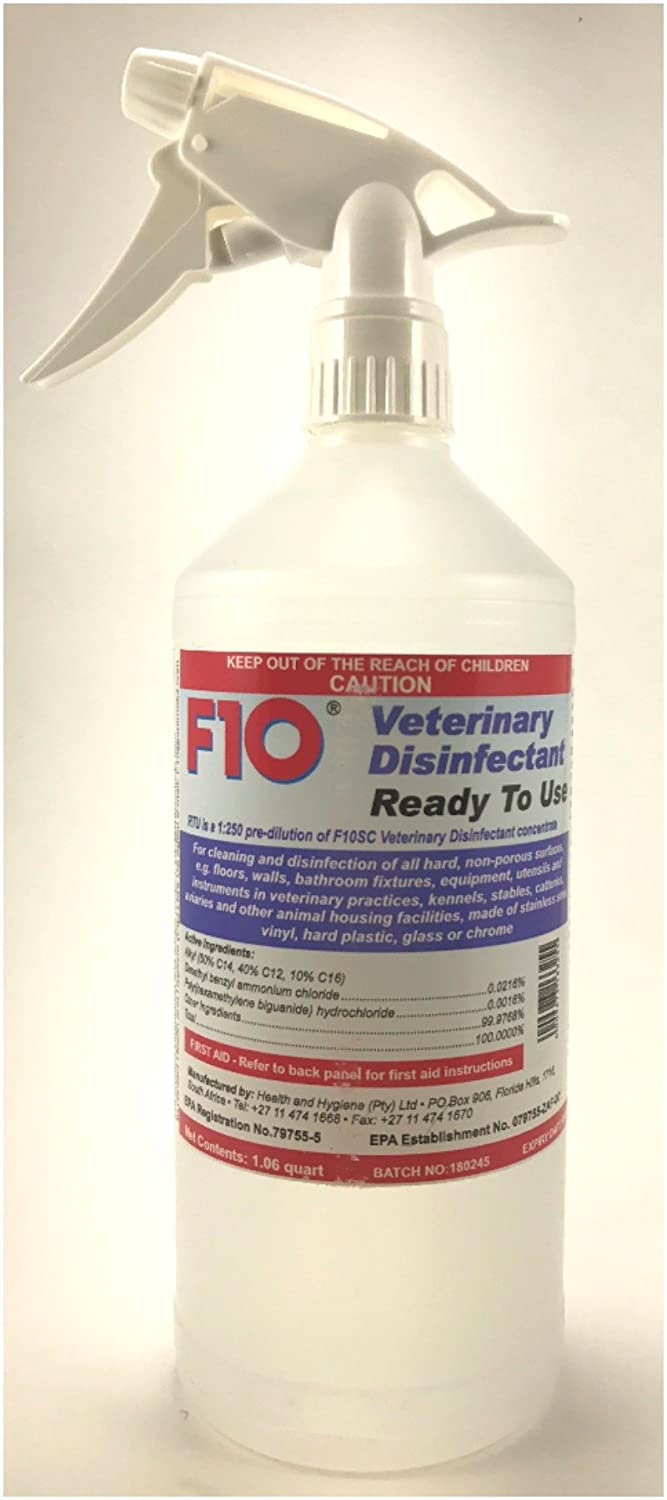
F10 Veterinary Disinfectant 1L Ready-to-Use by F10 SC
F10 Veterinary Store - $22.95
Vaccination
There is a mycoplasma vaccine marketed by MSD but it is recommended not to use it in breeding chickens. This appears to be because the manufacturers do not know how long the vaccine is effective.
With vigilance, mycoplasma can be kept at a low level in backyard flocks thus increasing the welfare of the birds.
What does Denagard treat in chickens?
Answer by: Noah Compodium
Denagard 10% w/w Premix for medicated feeding stuff for pigs, chickens, turkeys and rabbits. For the treatment and prevention of swine dysentery caused by Brachyspira hyodysenteriae. For the treatment of colitis caused by Brachyspira pilosicoli. For the treatment of ileitis caused by Lawsonia intracellularis.
This is the end of our present report, which will be constantly updated, when you sign up here you will be notified of such events, receive free e-books and more.
Anything you purchase from this site is from our affiliate Amazon for which we will receive a small commission that supports this blog and our Mission to remain free of those interfering advertisements.
We thank you dear friends and wish you a blessed chicken day.
Liane
Please click below for any other chicken needs.
